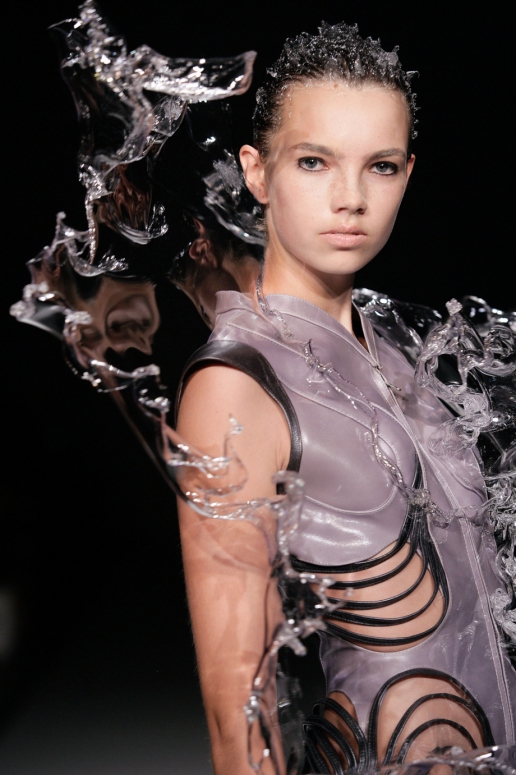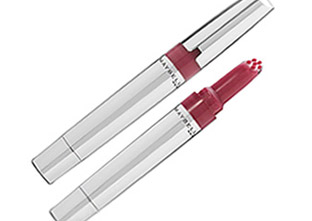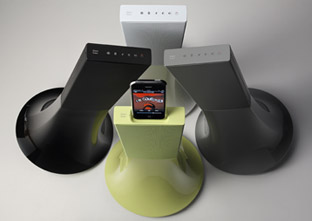
All (or nearly all) of the senses awakening!
The cosmetics industry is also on the scent
The luxury cosmetics industry has traditionally been linked with glass, a byword for quality, and has been reluctant to switch to the use of plastics for its packaging, no doubt anxious not to alienate itself from a clientele who like to have only the best. In the first instance, therefore, it was mass market products, often distributed through supermarkets, which were provided with packaging made from synthetic materials. Then, with the growing evolution of manufacturing techniques and the significant amount of new materials on the market, luxury brand manufacturers took the plunge.

Silky smooth in all its forms

The luxury cosmetics specialists never had cause to regret that decision, as their customers took to the new materials straight away. Plastic could obviously take on any shape and was unbreakable, but for some years it had developed a silky smooth texture… a real delight! It came in subtle, assorted colours, or iridescent, metallic, and even ostentatious when required. The company Albéa, one of the major players in cosmetics packaging, develops solutions for the perfume, make up, care and personal hygiene and care sectors. Creativity and a thorough knowledge of polymers have enabled it to earn the trust of the most demanding perfumers and cosmetics manufacturers. Accordingly, it has designed the stopper for Nina Ricci’s perfume l’Air : a sophisticated stopper in the form of a sculpture of transparent and minimalist doves. With no visible joints or soldering, at first glance you might believe it to be glass, so clear is the crystal ionomer resin.

And what about the top of the Maybelline WaterShine, on which Albéa has placed a holographic film of its creation, providing a sensational effect of multi-coloured rays? Plastic has developed intelligence. Albéa has developed a plastic push mechanism that can adapt itself to the creamy texture of the Dior Addict lipstick so that it does not get damaged.
Some packaging give off a pleasant fragrance related to the product it contains. Don’t worry, there isn’t a leak and the container is not porous. Quite the opposite! It is actually possible nowadays to incorporate into the plastic materials microcapsules that release a pleasant odour for several months. This technology is still new and allows the customer to have a fairly accurate idea of how the product smells without opening the packaging.
Quality at your fingertips
The automobile industry is, undoubtedly, one of the areas in which perceived quality is of paramount importance. Perceived quality refers to the quality level of a product as it is perceived by the consumer in a more or less subjective way. For the owner of the vehicle, having good quality accessories enhances its value, but is also synonymous with durability and safety. Manufacturers therefore have reason to be grateful to plastics, and particularly polyesters and silicones which, as additives, can create a bubbly, grainy or smooth appearance...textures that are as pleasing to the eye as they are to the touch. But that is not the only subtle use of plastics in a car. It is not a widely known fact, but each button and switch is analysed and issues a special sound that is pleasing to the ear, emitted as a reassurance for the driver. A “small click” can be translated as “everything is running smoothly”: a subject that is of considerable significance to manufacturers, who continue to encourage research in the hunt for the ideal material.

A “small click” can be translated as “everything is running smoothly”: a subject that is of considerable significance to manufacturers, who continue to encourage research in the hunt for the ideal material.

To assist them in their search, the school of materials at Lyon in France, supported by the Ecole centrale de Lyon, is in the process of developing an electronic finger capable of interpreting the sensation of touch. “The biggest problem is defining the sense of touch. We are all different, and what feels nice to one person does not necessarily do so to the next. We therefore asked several hundred people to handle different plastics, and then we recorded their impressions. These were collated in a database that we are using to calibrate the finger. Automobile manufacturers are extremely interested in this project, which should be of considerable help to them in finding the right material for their equipment. All they will have to do is point the finger at a particular material to find out immediately how it is perceived by a majority of consumers,” explained the school of materials.
Pleasing to the eyes…and the ears

Plastic and music have blended well together for some time now. Some of us can still remember vinyl records that were replaced in the 1980s by CDs and DVDs, also made from polymers. To the extreme delight of our ears, such plastic materials were not restricted to those media. Last autumn, the Parrot brand, specialists in Bluetooth technology, introduced a wireless speaker system with a completely unusual design. Hi-fi experts remained sceptical about sound quality of these new-look systems, which was the idea of the famous Philippe Stark. After an initial test, they quickly realised that as well as looking better, the system produced remarkable sound. The secret is not in the appearance, although the shape contributes, but in the technology employed. The case is made from a one-piece ABS plastic mould, with low vibration sensitivity, holding a number of speakers with PVC membranes: essential elements whose performance relies on elasticity.
For your eyes only
Opticians love it even more than they love people who wear glasses. We are, of course, talking about that essential element which corrects defective eyesight: glass. There is little real glass remaining, as almost all glasses are now fitted with organic glass. A modest little term, but misleading, since organic glass is in fact glass in name only; it is made from polycarbonate and is therefore four to five times lighter than mineral glass.


This type of “glass” has become more widely used since the 1980s. Improved manufacturing and, in particular, moulding techniques have allowed the development of a wider range of organic glass. Of course, the main parameters have been retained: an increase in the refractive index, machine-workability, solidity, excellent aptitude for colouring. Its lightness and flexibility for moulding allow a daring approach by frame manufacturers who know how to juggle with all of the polymers to make a bigger impact. For a long time now glasses have been a fashion accessory in their own right since being taken on by the major names in Haute couture.





